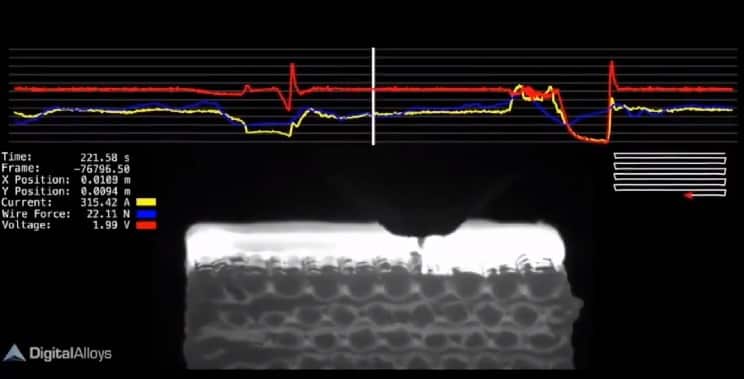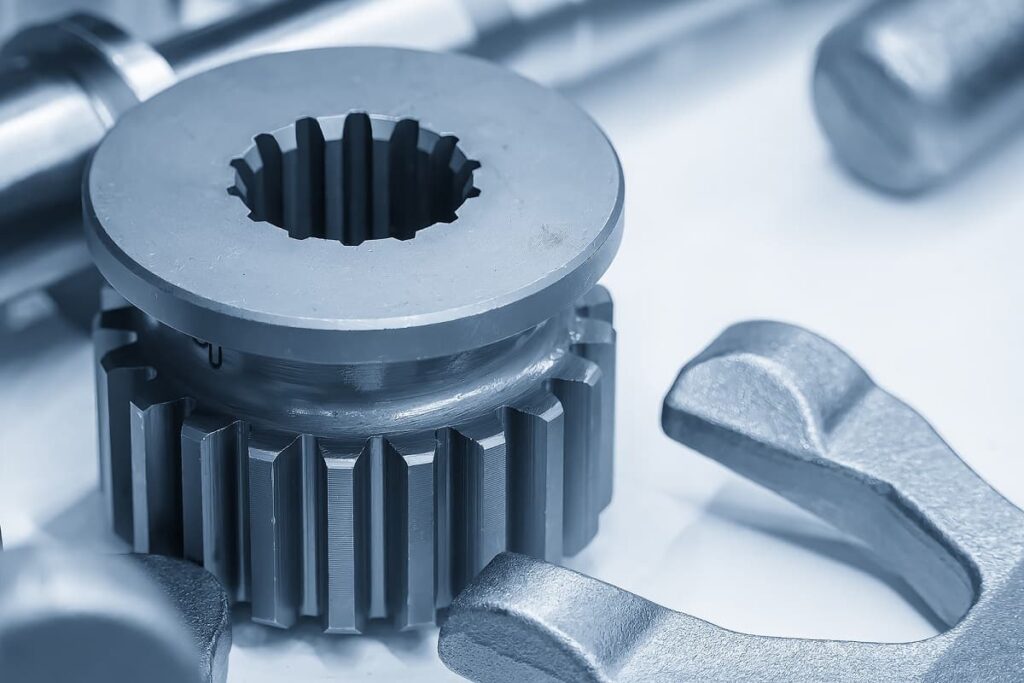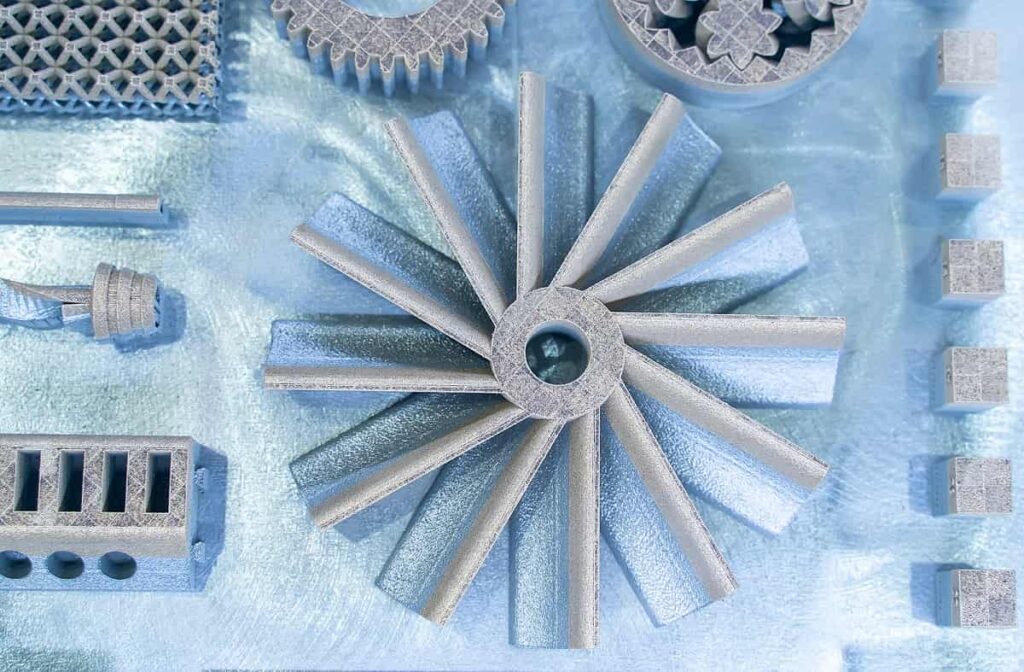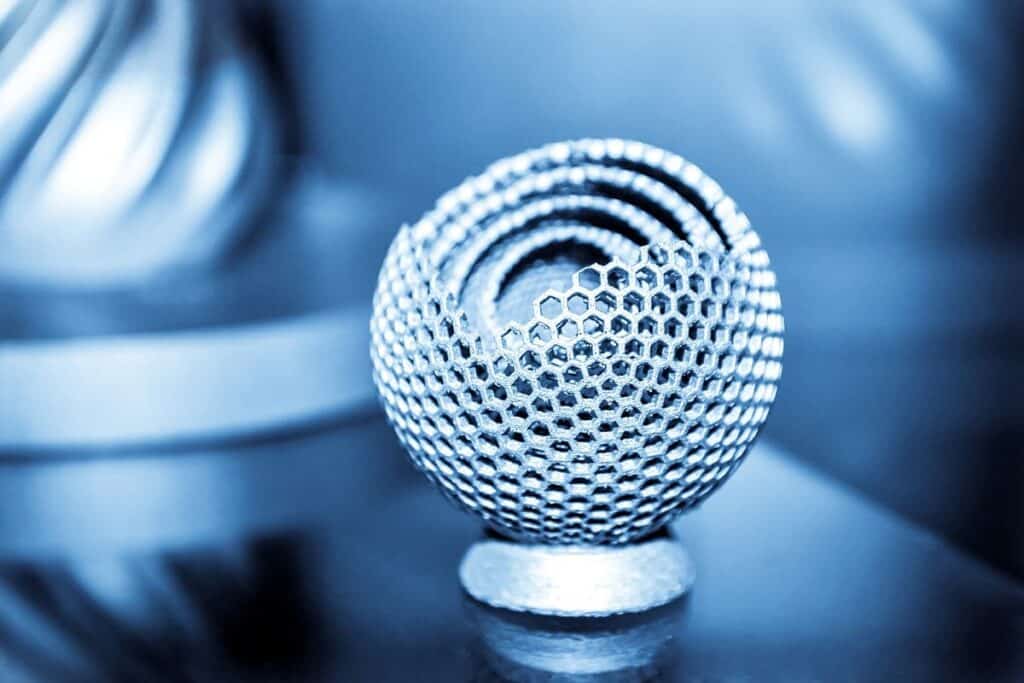Joule Printing – Fast, Low-Cost Metal 3D Printing
Table of contents

One problem we come across when trying to write about disruptive technologies is that they change so fast we can barely keep up. Not only that, but then we’ll realize that we’ve been writing about a particular topic for half a decade without even truly understanding the fundamentals behind how it works. Take 3D printing for example. We’ve all been to conferences where some vendor has a table with a 3D printer on it that churns away producing plastic neon keychains. Other vendors have cool-looking metal parts – already printed of course – that you pretend to be interested in when in reality you’re just there for their sponsored happy hour event. What none of these people will tell you is that 3D printing at a commercial level is far more complicated than we’re led to believe in those glossy marketing brochures. This is especially true for 3D printing metals.
After publishing our recent piece on 10 of the Most-Funded 3D Printing Startups in 2018, one startup let us know that we missed them – and indeed we had – because they weren’t classified in Crunchbase under the “3D printing” category. It’s not the first time that’s happened. There are actually a fair number of startups that don’t want to be seen as 3D printing – or as in the case of Digital Alloys – they’re too busy kicking ass and taking names to worry about some meaningless Crunchbase categorization. So, we decided to sit down with the CEO of Digital Alloys, Duncan McCallum, to talk about some of the interesting things his firm is getting up to when it comes to 3D printing metals. The first thing you ought to know is that there are a lot of ways to 3D print metals.

Today, we’re mainly going to talk about the company on the far, far left – Digital Alloys.
Digital Alloys – A Diamond in the Rough

People often complain about how “broken” venture capital is because VCs don’t trip all over themselves trying to invest in everyone’s “idea.” Even with traction and a proven ability to execute (in other words, way more work than most “wantrepreneurs” would ever consider committing to,) not everyone’s sacred cow will result in a successful exit. It takes a special kind of talent to find the diamonds in the rough, and it seems that Digital Alloys is one of those diamonds.
3D Printing Metals. It’s Complicated
Digital Alloys engaged with more than 400 manufacturers to find out what they thought about 3D metal printing and they all said the same thing. It’s too slow, too expensive, too complex, and too much of a journey to get high-quality metal. Consequently, it’s only used for “high-value” parts like Boeing’s LEAP nozzles. Most people probably don’t realize how complicated the metal 3D printing process actually is. You don’t just print the part and then ship it off to Boeing so they can stick it into a $400 million passenger aircraft and pay your invoice. There is an entire process behind producing a part that involves the following steps, not to mention the sort of quality assurance steps that might go into producing a part Boeing would slap into an aircraft.

To put this process in layman’s terms, the first thing you need is a spec file that you can feed the 3D printer so it knows what to print. Once the part is printed, the work begins. It’s something Digital Alloys calls 3D Printing’s “dirty little secret,” because post-processing is often more expensive and time-consuming than the printing process itself. Firstly, depending on the method of printing, you may need to separate the part from some other bits and bobs that were created when it was printed and also clean out the build chamber so it’s ready to go for the next round of printing. Next, you might need to soak the part in a solution for several days (debinding) followed by heating the part up in a furnace so that it becomes strengthened (sintering).
After all that, then you need to machine the part to spec, perform surface finishing so it looks nice and purdy, and then perhaps perform a final heat treatment (something that could also have taken place during previous steps as well.) By now you might be figuring out that each step in this process is a cost, and by reducing steps we can reduce both cost and complexity. Enter Digital Alloys.
Fast, Low-Cost Metal 3D Printing
It seems obvious that eliminating steps will increase speed and decrease cost, but first, we need to understand a bit more about the entire cost of 3D printing metals. We can break cost down into three different categories as follows:
- Printing – This is the actual speed at which you can print. The faster you can print, the more output you get out of each expensive 3D printer
- Materials – This isn’t just the cost of inputs (powders are 2-3X the cost of wires) but also what you waste during the process
- Post Processing – As we said earlier, the less stuff you need to do after printing, the lower the cost of the part
So far so good, so let’s get down to brass tacks. Here is how various methods of metal 3D printing compare.

We can see that Joule Printing (that’s what Digital Alloys does) is the cheapest, so it might be a good time to talk about what exactly Joule Printing is.
What’s Joule Printing?
The innovation that Digital Alloys came up with is called Joule Printing, and the technology behind it is Joule heating – the same reason why the coil of a toaster heats up or the filament in a light bulb glows. The printing system uses wire (about 2-3X cheaper than powder) and the end result is a product that doesn’t need debinding or sintering. What they’re able to do is push current into the wire itself so that the metal melts from within. Other methods like “direct energy deposition” also melt wire, but they use an external heat source. To describe the difference, we can turn to traditional welding.
Here’s basically how welding works. Some guy (96% of welders are blokes) takes a heat source and uses it to melt some metal wire which is used to connect or repair metal parts. Some 3D printing methods like “direct energy deposition” work in a similar fashion, using an external energy source like a laser to melt a metal wire. This results in ‘large puddles” of metal, making complex geometries very difficult to create. Digital Alloys also uses metal wire but no external heat source, which allows them to melt and form metal with extreme precision. And because the heat source is internal to the wire, it can print ridiculously fast while using very little power.
Speed is just one of the benefits of Joule Printing. Let’s look at some others.
The Advantage of Joule Printing
The name “Digital Alloys” cleverly describes one of the coolest features their platform offers. Duncan calls this a “closed-loop process,” and what that means is every single bit of what happens is constantly measured and controlled. Everything is being logged at millisecond intervals so that every element of the 3D printing process can be rendered digitally, and quality assurance can happen in real time. Not only that, but all those digital renderings become big data which they can then feed to hungry machine learning algorithm so they can teach us new things about the process. In essence, Digital Alloys has managed to digitize metal 3D printing at the voxel level, something that no other method that we’re aware of can do.

There are other advantages of using Joule Printing over other methods. For example, existing methods are great at producing objects bigger than a beach ball or smaller than a baseball. It’s the objects with sizes that fall in-between that Joule excels at. They can also do “overhangs,” which essentially means their method can print shapes and geometrics more precisely which also means less waste. All this boils down to several initial use cases for their technology.
- Creating parts from metals that are expensive like titanium. You can print the parts very close to the final size they need to be at (called near-net) which eliminates cost of scrap.
- Creating certain tools for die casting that are made from steels that are really hard to cut.
For the first use case above, Digital Alloys can provide significant cost savings that result not just from the speed at which they can print, but also the amount of raw material that’s needed.
Let’s say you were trying to manufacture a titanium aerospace fuselage bracket for an aircraft. In order to create the part using traditional machining methods, you would need to whittle the part from a solid block of titanium as seen below:

The end result would be that 94% of the raw material would end up as material scrap, and the ratio of metal used in the part to metal ordered for the part would be 17 to 1, something that’s also referred to as the “buy to fly ratio.” The higher the ratio, the more expensive a part is to produce. According to Digital Alloys, “a large aerospace manufacturer may purchase 50 tons of titanium in raw materials each day to produce only 4.5 tons of machined parts.” Assuming a cost of $55 a kilo, this is the difference between spending almost $2.5 million a day on materials versus $224,510 a day. The higher the buy-to-fly ratio, the easier it is to sell the Digital Alloys solution as a substitute for traditional machining methods.

But don’t take their word for it. Aircraft manufacturers also see this as the way forward, and a Chief Technologist at Boeing had the following to say about the future of additive manufacturing:
Historic aerospace buy-to-fly ratios can range from 15:1 to 30:1 on the high end, depending on the shape of the part and the manufacturing process. In the next few years we expect additive manufacturing to significantly reduce these ratios, while also being cost-competitive.
That certainly helps explain why Boeing has invested in Digital Alloys.
Conclusion
As Duncan patiently walked us through his deck, we realized just how much room for improvement there is in the industry, and how there are more than enough applications to go around for all the various participants who each use a different method of metal 3D printing. Well, maybe not all of them. It’s astounding to see just how many players there are now, and perhaps it’s time for some consolidation. This could be why investors are pouring money into Desktop Metal, a company that’s competing with all the big names that we’ve become familiar with over the years.

While there may be room for more than one player, expect to see some consolidation as companies like Digital Alloys and Desktop Metal use their big corporate backers – who have already committed to begin using their products – to force adoption across the entire value chain leaving some of the smaller players outside in the rain. We can’t help but wonder what this means for publicly traded metal 3D printing stocks like ExOne (XONE) or SLM Solutions (AM3D:GR), so that’s something that we’re going to look at next.
Sign up to our newsletter to get more of our great research delivered straight to your inbox!
Nanalyze Weekly includes useful insights written by our team of underpaid MBAs, research on new disruptive technology stocks flying under the radar, and summaries of our recent research. Always 100% free.















